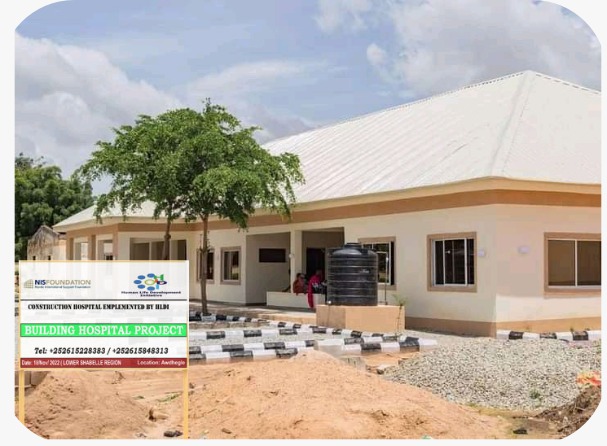Project Duration: 70 days
Location: Wanlaweyn
Equipment: Borehole drilling equipment, pipes, pump, engine, engine room, and water tank
Funded By: IOM/SSI
Implementing Partner: Human Life Development Initiatives (HLDI)
Date: 2017
Executive Summary
This project report outlines the successful implementation of a community borehole water system in Wanlaweyn. The borehole, with a depth of 80 meters, was completed within a 70-day timeline. The project aimed to provide safe and accessible water for local residents, improving their quality of life and health. It was funded by IOM/SSI and implemented by the Human Life Development Initiatives (HLDI).
Introduction
Access to clean water is essential for the health and well-being of any community. In Wanlaweyn, residents faced challenges in accessing safe and reliable water sources, leading to health risks and a decreased quality of life. This project aimed to address this issue by drilling and installing a community borehole water system, providing a sustainable and accessible water supply for local residents.
Project Objectives
- To provide a safe and reliable water source for the community in Wanlaweyn.
- To improve the overall health and well-being of local residents.
- To promote sustainable water management practices within the community.
Scope
The project focused on the drilling and installation of a borehole water system in Wanlaweyn. The borehole was designed to have a depth of 80 meters, ensuring adequate water supply for the community. The project also included the installation of necessary equipment and infrastructure, such as pipes, a pump, an engine, an engine room, and a water tank, to facilitate easy access to the water system.
Methodology
- Site selection: Identify a suitable location for the borehole, considering factors such as water availability, land ownership, and accessibility.
- Procurement: Acquire necessary drilling and installation equipment, materials, and permits.
- Drilling: Drill the borehole to a depth of 80 meters, ensuring proper safety measures and adherence to local regulations.
- Installation: Install the required infrastructure, such as pipes, pump, engine, engine room, and water tank, to facilitate access to the borehole water system.
- Testing: Test the water quality to ensure it meets safety standards and is suitable for consumption.
- Community involvement: Engage local residents in the project, providing education on sustainable water use and maintenance of the borehole water system.
- Monitoring and evaluation: Assess the project’s impact on the community and gather feedback for future improvements.
Stakeholders
- Local residents: The primary beneficiaries of the borehole water system.
- Local authorities: Government officials responsible for approving permits and overseeing the project.
- IOM/SSI: The funding organization for the project.
- HLDI: The implementing partner responsible for planning, drilling, and installing the borehole water system.
- Community leaders: Local leaders who supported the project and facilitated community engagement.
Project Timeline
- Day 1-10: Site selection, procurement of equipment, materials, and permits.
- Day 11-50: Drilling of the borehole.
- Day 51-70: Installation of pipes, pump, engine, engine room, and water tank; water quality testing and adjustments; community involvement, education, and project wrap-up.

